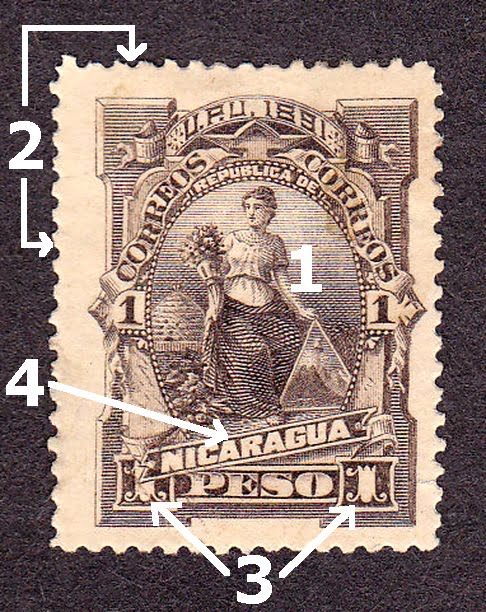Postage Stamps: What are Postage Stamps (update in 2022)?

Postage Stamps: What are Postage Stamps (update in 2022)?
Postage stamps first appeared in the mid-17th century, mainly to certify payment to the postal service.
The Birth of postage stamps
Postal communication has a long history. By the 17th century, Britain had already begun to establish a state-run postal service.
In the 1830s in England, letters were charged to the recipient according to the distance and number of pages. The high postage rates were unaffordable to the general public, so people tried to pay less or no postage at all, resulting in high postage rates and reduced national postal revenue.
Roland Hill was an outstanding reformer. He started to study the postal reform in Britain in the year.
In order to publicize his postal reform ideas, he published his famous pamphlet “Post Office Reform – Its Importance and Relevance” in January, 2007. The pamphlet was widely distributed and attracted the attention of the public opinion.
In August of that year, Parliament finally passed the famous “1p Postage Act”. On January 10, 1930, Britain decided to implement Roland Hill’s proposal to charge 1 pence per ounce for letters, regardless of distance.
This was the far-reaching penny-per-ounce postage system in the postal history of the world.
There was a public collection of drawings of postage paid vouchers in the UK, and many of them were received. The image has the word “Postage” in the top center and the denomination of 1 pence in the bottom center.
The sheet is printed in black, so it is also known as the “black penny”, with 12 pieces across and 20 pieces down, for a total of exactly one pound. There were no perforations around the stamp because no punching machines had been invented at the time.
The black penny stamp was scheduled to be issued on May 6 of the year, but some post offices went on sale on May 1, and the world’s first postage stamp was born.
In recognition of his outstanding contribution to postal reform, he was knighted by the First Lady of England and is known as the “Father of the Stamp”.
Components of a stamp
The first is the stamp bearing the issuing unit in mind.
A mark on the face of a stamp that indicates the country, region, and issuing agency that issued the stamp. This is expressed in words, abbreviated letters or special marks, such as “United States Postal Service”.
Almost all stamps issued by different countries (regions) have their own stamp markings, except for a few that are not printed. The stamps issued by the same country (region) at different times may have different stamp memories.
For example, British postage stamps have always had the King’s portrait in mind, and since the beginning of the year have had the Queen’s profile head silhouette in mind. There can be one or more than two kinds of postal stamps. This is an important basis for determining the country or region of issue of a stamp.
Secondly, it is printed with words corresponding to the face value.
The amount of postage and its monetary unit are indicated in words on the stamp face. The currency unit of postage stamps of countries (regions) around the world is mostly the legal tender of the country (region) and its coins; the face amount is mostly the common mail rate.
Exceptions are: dual currency postage stamps, no-value postage stamps, and postage stamps with donations, combined with or in combination with stamp duty postage stamps.
postage stamps with changed denominations are referred to as “stamped change postage stamps”.
The right to change the face value of postage stamps belongs to the postal authorities.
The face value of postage stamps and the selling price of postage stamps are generally equal, and post offices and stamp resellers have no right to sell postage stamps above or below their face value.
However, for some postage stamps (including souvenir sheets, dentless postage stamps, souvenir sheets, etc.), the postal authorities stipulate that the selling price exceeds the face value at the time of sale.
The postage stamps are sold by postal dealers beyond the stipulated time limit for post office sales, and the selling price is different from the face value of the postage stamps.
Third, the pattern
- The graphic on the face of the stamp. A general term for the entire printed content included on the face of a stamp, of which the main image, the border and the border are the main ones. In addition, there are country name markings or place name markings, postal ticket marks, stamp denominations and text reflecting the purpose of stamp issuance, and the year of the logo, etc.
- Postage drawings printed on postage envelopes, postage postcards, and postage postal journals. Stamp patterns are an important element in the study of thematic philatelic classifications. In special cases, there are also postage stamps that do not have one or both of these elements. It should be noted that the postal images on postal covers, tubes, letter cards, etc., cannot be called postage stamps, but only “postal symbols”.
Types of postage stamps
The main types is the following:
- Ordinary postage stamps: These are postal stamps that are issued in large quantities and are suitable for affixing to all types of mail, and are the main category of postage stamps. Ordinary postage stamps are the main postal products for weaving traditional postal collections and postal history postal collections, and they are also one of the objects of plate studies.
- Commemorative postage stamps: Generally issued to commemorate major festivals or personalities, among which the old gestation postage stamps of the 1950s and 1960s are among the treasures and are quite popular among philatelists.
- Special postage stamps: In many countries, they refer to stamps with special purposes or special functions, while China’s special stamps have another meaning, that is, they refer to stamps with a specific theme other than commemorative postage stamps and ordinary postage stamps.
- Airmail postage stamps: They are postal stamps issued specifically for mailing airmail letters. Most countries around the world issue airmail postage stamps with aircraft as the design.
- Default postage stamps: These are special stamps issued by the post office to collect the outstanding postage from the recipient.
Classification of stamps by purpose
The following are classified by purpose.
Ordinary postage stamps, airmail postage stamps, delinquent postage stamps, military postage stamps, parcel postage stamps, official postage stamps, registered postage stamps, tax postage stamps, printed postage stamps, postcard postage stamps, and record mail postage stamps. Guaranteed letter postage stamps, express delivery postage stamps, postal tax dual-use postage stamps, licensed free postage stamps, domestic mail postage stamps, foreign mail postage stamps, air pressure transmission postal postage stamps, rocket postal postage stamps, city postage stamps, pro-opening postage stamps, Sunday undeliverable postage stamps, arrival confirmation
Introduction to other types of stamps.
Personalized postage stamps are a type of stamp where the main image is determined and the secondary postage stamps can be changed as needed. The sub-postage stamps can be personalized with a variety of content such as major events and unit advertisements, as well as personal photographs, etc., which are subject to legal restrictions.
Electronic postage stamps can also be called automated postage stamps or postage machine postal stamps. It is a type of postage prepaid voucher created to meet the needs of postal automation. It is sold by a computer-controlled automatic ticketing machine in a pre-printed pattern as a single stamp “spit out” according to the postage denomination required by the user.







